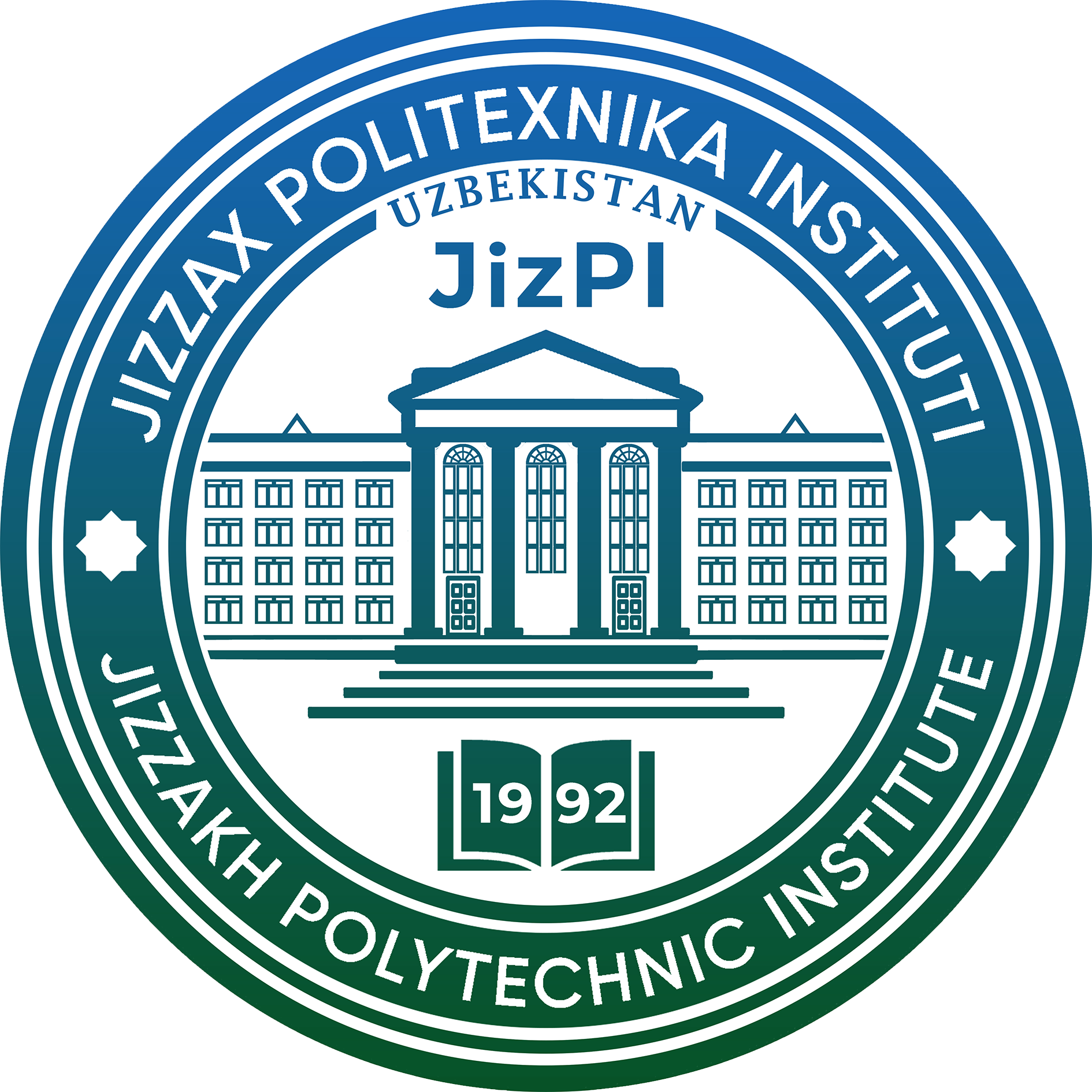 |
The head of the department “Radioelectronics” |
| assistant professor, candidate of physico-mathematical sciences Мustofoqulov Jabbor Akhmatqulovich | |
| Reception days: Friday, 4pm | |
| Phone: 998 90-224-55-39 | |
| E-mail: J.Mustofoqulov@inbox.ru |
Information about the department –
The department “Radioelectronics” was formed on October 10, 2017 on the basis of the department “Power engineering”. Teaching staff of the department consists of 14 teachers, including 4 associate professors, 3 senior lecturers, 7 assistants.
Scientific directions of the department:
1.Mathematical software and hardware for creating a robotic eye system analyzer. (F.Muldanov)
2.Improving the efficiency of training specialists in alternative energy sources (solar and wind energy) based on innovative educational technologies. (ass. F.Yuldashev)
Educational-methodical work of the department:
1.Саттаров С.А., Каршибоев Ш.A. “Радиоавтоматика” – учебник
2.Каршибоев Ш.A., Иняминов Ю. “Радиоэлектроника” – учебное пособие
3.Мустофокулов Ж.A., Хамза A.И. “Схематехника” – учебное пособие
4.Юлдошев И.А., Юлдашев Ф.М. “Қуёш энергетикаси” – учебник
List of influential editions of scientific articles issued by members of departments over the past three years
1.B.Khuzhayorov, J.Mustofoqulov at all. Solute Transport in the Element of Fractured Porous Medium with an Inhomogeneous Porous Block, Journal of Symmetry, Basel, 2020, 12, 1028, 1-13.
2.B. Khuzhayorov, J. Mustofoqulov. Transport of Active Solute in a Fractured Porous Medium with Nonequilibrium Adsorption. IJARSET, 2018. Vol. 5, Issue 12, 7589-7597.
3.Turapov Ulugbek Urazkulovich, Muldanov Fayzi Riskulovich. Analysis of Criteria for Image Processing and Recognition on the Basis of Informative and Strong Signs of Personal Face Structure. AIP Publishing, ICPPMS, 2021, Tashkent 10-11 june.
4. Игамкулов З.А., Саттаров С.А., Уринов Ш.С. Применение полупроводникового детектора для определения относительной на внутренней мишени нуклотрона. Научный журнал “Интернаука”. №20, 2021. Москва. 93-97.
Scientific programs
- 1. Radio automation
- 2. Electrodynamics and radio wave propagation
- 3. Electrical and Electronics
- 4. Radio materials and components
- 5. Electronics and functional electronics
- 6. Electronics
- 7. Radar and radio navigation systems
- 8. Computer simulation in electronics
- 9. The basics of photonics
- 10. Amplifiers and switching devices
- 11. Equipment microcircuits
- 12. Microwave and antenna devices
- 13. Antenna-feeder devices of mobile communication systems
- 14. Analog instruments and devices
- 15. Introduction to Nanotechnology
- 16. Measurement of non-electrical dimensions
- 17. Devices for receiving radio signals
- 18. Physics in construction
- 19. Design and technology of electronic devices
- 20. Radio transmitters
- 21. Robotics sensors and devices
- 22. Circuitry
- 23. Automatic control devices
- 24. Biophysics
- 25. Design and construction of integrated circuits
- 26. Communication device design
- 27. Physics and technology of multilayer structures
- 28. Physics and technology of solar cells
- 29. Material science
- 30. Micro and nanoelectronics
- 31. Microprocessor devices
- 32. Equipment for television and radio studios and stations
- 33. Physics
- 34. Radio measurement
- 35. Radio frequency circuits and signals
- 36. The basics of electronics
- 37. Television
- 38. The main projection project
- 39. Physicist, main radio engineer
- 40. The basics of radio electronics
- 41. Methods and fundamentals of technological control
- 42. Modern methods of physical measurement
- 43. Additional chapters on physics
- 44. Electr engineering
- 45. Electrical materials
Control questions
- 1.Radio Measurement (R T)
- 2. Electrical materials (EE, EEE)
- 3. Electrical engineering and electronics (in all directions)
- 4. Additional chapters on physics (E va A va MS)
- 5. The basics of photonics (E va A)
- 6. Integrated Circuit Design (E va A)
- 7. Amplifiers and switching devices (RQ va T)
- 8. Micro and nanoelectronics (RQ va T)
- 9. Equipment microcircuits (RQ va T)
- 10. Measurement of non-electric dimensions (RQ va T)
- 11. Diagnostics of radio devices (RQ va T)
- 12. Analog meters and instruments (RQ va T)
- 13. Design and technology of electronic devices (RQ va T)
- 14. Microwave and antenna devices (RQ va T)
- 15. Antenna-feeder devices of mobile communication systems (RQ va T)
- 16. Radio receiving devices (RQ va T)
- 17. Radio transmitters (RQ va T)
- 18. Microprocessor (RQ va T)
- 19. Robotics sensors and devices (E va A)
- 20. Applied Electronics (E va A)
- 21. Mechanics, molecular physics, and electrical separation (In Biophysics-QXMST va UDQID)
- 22. Physical fundamentals of radio engineering (P)
- 23. Physics and technology of solar cells
- 24. Physics in construction (AYva A)
- 25. Powerful electronic devices (E va A)
- 26. Physics in construction (A)
- 27. Magnetism and optics, atomic physics (II-sem)
- 28. Mechanics, molecular physics and electrical parts (I-sem)
- 29. Optoelectronics (E va A)
- 30. Radio materials and radio components (RQ va T)
- 31. Fundamentals of Radio Electronics (RQ va T)
- 32. Television studios and equipment (RQ va T)
- 33. Methods and tools of technological control (E va A)
- 34. Modern methods of physical measurement (E va A, RQ va T)
- 35.Electronic Instruments and Integrals (E va A)
- 36. Electrical Engineering (KT)
- 37. Electrodynamics and radio wave propagation (RQ va T)
- 38. Electronics and functional electronics (RQ va T)
- 39. Electrical and Electronics (YSBK va TS)
- 40. Electrical and Electronics (AT)
- 41. Electrical and Electronics (MS va MSM)
- 42. Materials and elements of electronic equipment (E va A)
Staff
- 1. Khamzaev Akbarkhon Ilash ugli
- 2. Zohid Kulboev Khodzhamurodovich
- 3. Akhmadzhonova Umida Tozhimurodovna
- 4. Bobonov Dilmurod Toshpolatovich
- 5. Ibragimov Jahongir Kochimovich
- 6. Inyaminov Yuldosh Orishkhanovich
- 7. Karshibaev Sharof Abduraupovich
- 8. Mamatkulov Bakhodir Hasanovich
- 9. Mamatkulov Bakhodir Hatamovich
- 10. Muldanov Fayzi Riskulovich
- 11. Mustafakulov Asror Ahmedovich
- 12. Juraeva Nasiba Mardievna
- 13. Rabbimov Eshboy Azimovich
- 14. Sattarov Sergey Abudievich
- 15. Suyarova Matluba Khusanovna
- 16. Umarov Baburjon Kilich ugli
- 17. Urinov Shukhrat Suyunovich
- 18. Halolov Orzikul Kodirovich
- 19. Eshbekova Sanobar Omonlikovna
- 20. Yuldashev Farrukhjon Murod ugli



